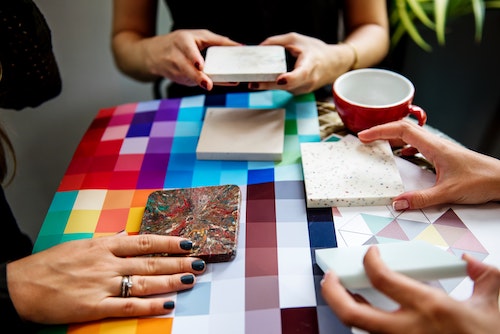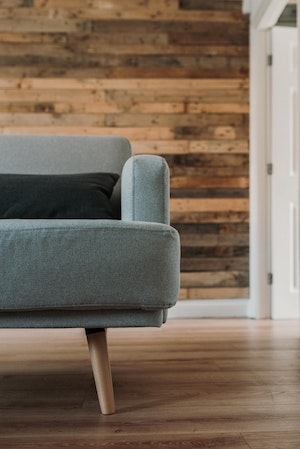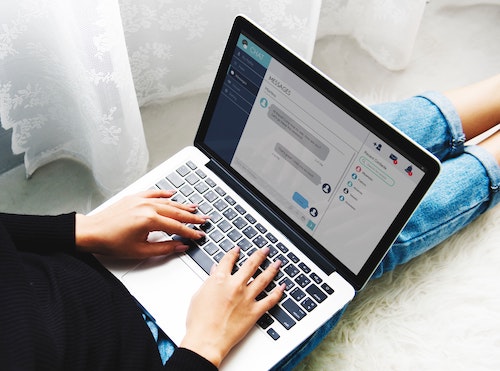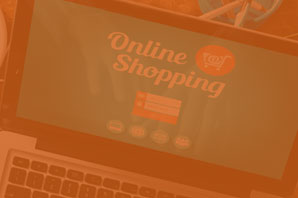The online furniture market is now $50 billion. As more people have warmed up to the idea of buying furniture online, the industry has seen 18% annual growth, making furniture the fastest-growing eCommerce industry currently. That’s great for online furniture stores. But it represents a challenge to more traditional brick & mortar retail. Around 80% of home furnishings are still purchased in a physical store. But because of the move toward online purchases, today’s consumers expect something different from a traditional store. They want interactive retail stores that create a more experiential way of shopping in stores and online.
Delivering this experience not only gets more people into your physical stores. It strengthens your brand and business online where more and more sales are taking place. Here’s how to create the kind of experience people of all ages are looking for.
What is Experiential Shopping?
Experiential shopping is an interactive and generally technology-enhanced customer experience. It can take place in your store, online or could be a hybrid of the two.
The best experiences in interactive retail stores are also:
- Meaningful – Choose experiences because you know that they’re something that will matter to your customers.
- Personalized – Build experiences around individuals so that they quickly find the items that most interest them.
- Immersive – Appeal to multiple senses. Evokes emotion. Be aesthetically-pleasing, inviting and stimulating.
- Balances Human with Technology – There are times that people want the help of others and time they prefer to help themselves. Interactive retail stores give people options to interact with you how they’d prefer to.
Benefits of Experiential Shopping 
Experiential shopping promotes higher-level customer engagement, which encourages greater investment in your brand and the buying experience. More invested customers tend to buy more and share their brand experiences with others. Experiential shopping gives customers something to remember. It distinguishes you from similar home furnishings retailers, especially those big online retailers that provide no experience beyond shopping. When you can capture the memory of a customer, you can earn their loyalty.
You may be surprised just how much experiential shopping has already become somewhat commonplace in our day-to-day lives. Some very basic experiential shopping you likely already use:
- Self-order kiosks and apps at places like McDonald’s
- Check your own prices in big box stores like Walmart, Best Buy, etc.
- Free WiFi in a retail store
- An interest calculator on a financial website
- Chatbots
- Style quizzes on retail websites (like fashion sites)
- Augmented Reality apps
Little things like these further the customer’s journey toward making a purchase. Experience is even bringing Millennials and Gen Z back into physical stores. 49% of these age groups say they’ve gone to physical stores more in the past year because stores have enhanced the in-store experience. If they just wanted to buy something, they’d do it online.
What Kind of Interactive Retail Stores Do People Want?
A Walker Sands survey of over 1600 retail consumers found the following experiences that people want from your brand.
- 30% said the store offered them a drink or snack
- 18% said that the retail store offered more personalized experiences
- 17% said special events and entertainment
- 16% said kid’s activities while they shop
- 12% said better in-store mobile experience
Keeping these desires in mind, what kinds of in-store experiences might a furniture brand like yours implement to create more interactive retail stores? Let’s take a look.
In-Store Experiences
Here’s how to set up some specific in-store experiences to get the right people in your doors.
Hosting Local Events
Hosting a local event is a great way to reach people of all ages who are your likely customers. Events get people physically into your store who may not otherwise make the trip. It’s easy to create buzz around a well-designed event online and in the community.
Follow these steps to design that kind of event:
- Define Your Target – An event can’t be everything to everyone.
- Choose an Event – Local events come in many kinds. (e.g, concert, meet a celebrity, carnival, local artisan, raffle, costume, charity drive or a combination as long as the purpose is clearly defined.
- Clearly define your goals (3-5) for the event – How will you measure success? Remember SMART (Specific, Measurable, Attainable, Relevant, Time-bound). For example, Goal 1: This event will increase our Facebook followers by 25% by end of this month.
- Establish partnerships – Often the best events are collaborations between non-competitors.
- Consider logistics – How will you run the event? What and who do you need to do so?
- Promote to the right audience – How will you get the word out (e.g., Flyers, Facebook ads, Facebook followers, Loyal customers, Influencers)?
Keep each of the above in mind as we look at other ways to create more interactive retail stores with experiential shopping. Now, onto one of our favorite events, the design workshop.
Hear more about this idea in our retail podcast episode “Is Brick and Mortar Dying?”
Design Workshops
Design workshops work well with a smaller group of people, so they’re easy to manage. They allow your sales team to get to know customers as they get to know you. But they’re also easy to scale up, so if you have space, you can welcome as many people or host as frequently as you can generate interest.
Here are some tips for hosting a great design workshop.
- Get your sales team pumped – This is a great time for them to nurture customer relationships. Get their input and encourage their participation.
- Serve food or drink – Partner with a local caterer, sandwich shop or wine store to offer event-appropriate hors d’oeuvres and drinks
- Match your time with an audience – Try different times of the day to attract different groups of people. A morning group might attract stay-at-home moms or dads whose kids are in school. An event in the early afternoon might attract baby boomers and retirees. If you want to attract those with full-time jobs outside the home, you’ll need to run evening or Saturday workshops.
- Let each person create their own design – Think “student-centered” rather than instructor-centered. Purchase tablets for your workshops or encourage everyone to bring their smartphones. Direct them to your online room design tool. Walk customers through how to use the tool. Provide tips, pointers and some pre-created examples on the tool that will awe and inspire. Help them create their own designs in-store. Encourage them to walk around the store to see and feel many of the items in person. They can save their design to finish at home and even build a shopping list from it.
One-on-One Style Finder 
The one-on-one sales experience is a cornerstone of in-store purchases. Technology has taken the sales experience to the next level. You can empower your sales team with tools that enhance their sales performance by better personalizing the customer’s in-store experience.
One way to do this is with the online style finder quiz through the iNGAGE tool from MicroD. Equip your sales staff with tablets. Your helpful sales team members can walk customers through the tool to determine their style and then get customized suggestions based on that customer’s preferences.
Additionally, you can set up kiosks or encourage customers to use the tool in-store. Or have signs around the store asking them to check it out on their smartphones. This guides those who prefer self-service through their own experiential shopping experience and keeps them in the store longer. Giving people options and customizing the experience to reach more customers — now that’s how to create interactive retail stores that customers love!
You can do a lot with the in-store experience. But online experiences become your 24/7 way to connect with more local customers where they spend most of their time. What kinds of online experiences can you create for a home furnishings store? Let’s take a look.
Online Experiences
Live tweet Q&A Session
Your customers have questions. You’ve got the answers. Live Q&A’s are a great way to get people interacting with your business and each other online. Q&A’s not only serve the purpose of answering questions. They:
- Get people talking – experiences, products, and designs
- Provide social proof – People see that others are interested in your brand. They want to join in and find out what this is all about.
- Increase your social media presence – People look forward to the events. More people follow and share.
- Get people into your store – This may be your online store or your physical store.
- Increase your search presence – All of this extra activity will help your website’s search rankings over time as part of your overall SEO strategy
To host a great Q&A:
- Plan the event and promote it.
- Be ready with a team to answer questions.
- Start a two-way conversation. Answer questions. But also ask pre-planned questions to start discussions and keep things flowing if the questions slow down.
Facebook Live Design Tutorial
Take your design workshops online through Facebook live. Plan and promote your event. Get people together at a specified time to use the design tools together, ask questions, talk and share the experience.
Sometimes people want to connect with others with online community experiences like this. Other times, they prefer to do it on their own. You create the right experience for all kinds of people by giving them that option with the online room planner.
Online Room Planning
Through your website, customers can use the same online room planning tool you use in your design events in their own time. Help them build the perfect room and then link them to the specific items in your store to make that dream space a reality.
Style Finder Online
You can also adapt the style finder quiz for either an in-store or online experience. Using an online style finder is like giving your customers a personal artificial intelligence (A.I.) sales person that they can access 24/7 to make personalized suggestions and guide the buying process.
The style finder and the online room planning tool are two experiential shopping tools that very directly turn website visitors into qualified leads. Now that you know so much about this customer, you can offer the most personalized experience possible each time they visit your website.
This matters to customers.
- 31% of customers say that they want retailers to create a more personalized online experience.
- Only 22% of people currently think retailers are doing enough to personalize their experiences.
- 57% of people are willing to share more personal data with a retailer if they use it to personalize the experience.
- 62% of customers say they expect online businesses to send personalized offers to them based on their shopping history
Incorporating Live chat and Chatbots
Live chat has been around for a long time. But as it becomes more common, more customers now expect it. They appreciate how easy it is to get immediate help online when they’re ready to make a purchase. Here are just a few the things that researchers have found when exploring the benefits of live chat for retail businesses like yours. 
- 42% of people prefer to live chat vs having to send you an email. Live chat provides instant answers that can lead to instant sales.
- 77% of people say that they do not buy online from a business that doesn’t offer a live chat option. They see live chat as accessibility to customer support and a willingness on your part to provide a great online customer experience.
- Customers who engage with your live chat system on average spend 4.5X more than those who don’t
That’s great. But what about people on your site at 11 PM or 3 AM? Maybe you can’t afford to have some someone available to answer questions during those times. Chatbots can help. Chatbots can guide a customer toward the answer to their question. Build a well-written FAQ with common questions. Keep adding to that FAQ as new questions come in. When a person asks a question, the chatbots takes them right to the answer.
If the answer is insufficient, it either sends the chat to a live person (during hours), gives your business hours or allows a person to leave a message that will be returned when your business opens. Live chat and Chatbot systems today are easy to set up and manage. This is just one more way you can create more interactive retail stores and show customers you care.
Interactive Retail Stores
There are so many ways that you can start to create a more experiential shopping experience now. Consider who your target is and the tools you’ll need to create that experience. Then build that experience and promote it. Don’t forget to set clear goals and track your performance to find out which shopping experiences deliver the highest ROI in the short and long term.
Interactive retail isn’t going anywhere. Increasingly, it’s what today’s customers across age demographics expect. You can deliver it with our help. To learn more about how MicroD can help you design more interactive retail stores, contact us to schedule a demo.





